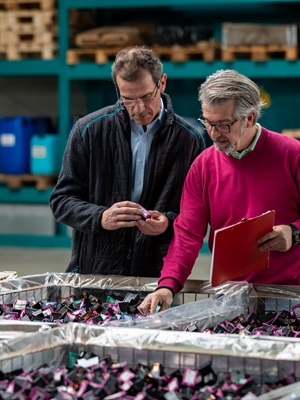In the hospitality industry, sustainability has evolved from a marketing trend into a core business imperative. Resorts around the world, especially those operating in delicate biodiversity hotspots, are increasingly turning to green certifications to formalize their environmental commitments.
These certifications, such as ISO 14001, Green Growth 2050, EarthCheck, or LEED, go beyond badges of honor; they are structured roadmaps for measurable, long-term sustainability performance.
While many resorts are eager to “go green,” the challenge lies in translating that intention into tangible results. This is where green certification frameworks play a transformative role. They require properties to systematically assess and manage their energy use, waste production, water consumption, emissions, and long-term biodiversity projects, pushing sustainability from abstract goals into daily operations. For example, ISO 14001 focuses on the development of an Environmental Management System (EMS), a tool that helps resorts identify environmental risks, set reduction targets, and continually improve performance. Similarly, Green Growth 2050 integrates climate resilience, biodiversity conservation, and social responsibility, encouraging resorts to align their actions with global sustainability standards and the UN Sustainable Development Goals.
One of the strongest advantages of certification programs is their emphasis on quantification. By requiring detailed monitoring and reporting, they help resorts measure key indicators such as carbon emissions, waste diverted from landfill, fuel consumption. This data-driven approach not only identifies areas for improvement but also provides credible proof of progress, something increasingly valued by guests, investors, and governments alike.
In fact, many certified resorts report reductions in their carbon footprint through energy-efficient technologies, renewable energy integration, and behavioral change campaigns. For instance, shifting to LED lighting and smart energy systems can cut energy consumption by up to 30%, while composting and recycling initiatives drastically reduce waste emissions. Over time, these measures translate into both environmental and financial savings.
In an age where travelers are more environmentally conscious than ever, certification also builds trust. Guests want assurance that a resort’s sustainability claims are real, not just greenwashing. Third-party audits and continuous verification under certification schemes create transparency and accountability, ensuring that commitments are backed by evidence. This credibility strengthens brand reputation, enhances guest loyalty, and even attracts partnerships with like-minded tour operators and corporate clients seeking sustainable travel options.
Beyond individual properties, green certifications create ripple effects. They foster a culture of sustainability among employees, influence local suppliers to adopt greener practices, and inspire neighboring businesses to follow suit.
In Maldives, where resources are finite and ecosystems fragile, this collective improvement can make a real difference in achieving carbon neutrality and protecting natural heritage.
Ultimately, certifications are not just about compliance, they’re about commitment. They help resorts align their daily operations with global climate goals, reduce their actual carbon footprint, and contribute to the transition toward a low-carbon tourism model.
As the climate crisis intensifies, the hospitality sector’s leadership in environmental stewardship becomes more crucial than ever. Green certifications give resorts the tools, structure, and credibility to turn sustainability promises into lasting, measurable impact.
By integrating certification frameworks into their operations, resorts do not just tell a sustainability story; they live it, measure it, and continuously improve it for the planet and future generations.
Posted 01/11/2025

















